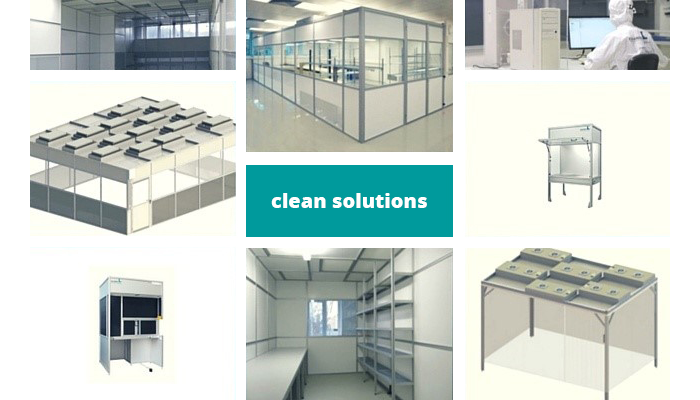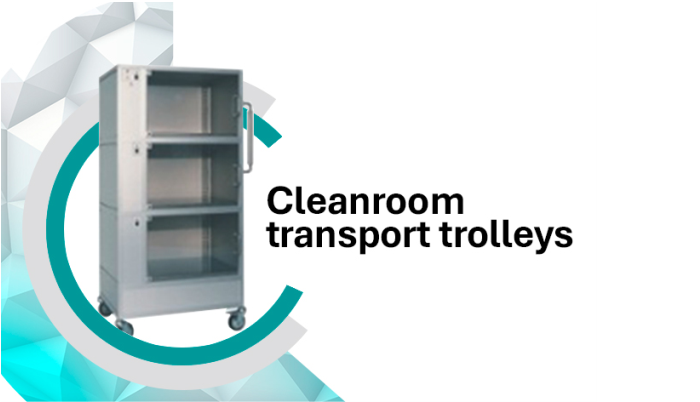Comparison of clean air solutions
Different customer requirements demand different cleanliness solutions. The most important solutions in cleanroom technology are therefore described...
The term ‘technical cleanliness’ has its origins in the continuously increasing demands placed on manufacturing conditions in the automotive industry. When it comes to particle cleanliness, the mostly medium-sized suppliers can no longer rely solely on in-house testing and inspection procedures. The VDA19 guidelines and their international counterpart, the ISO 16232 guideline, apply.

A component is considered technically clean if the residual particles on it do not impair or even prevent the correct functioning of the component or assembly.
To classify the degree of technical cleanliness, there are fixed guideline values for each field of application, depending on the component, which must not be exceeded or only within certain percentage limits.
In order to avoid or reduce recontamination once the necessary component cleanliness has been achieved, production in a cleanroom or in clean areas or local cleanliness areas is recommended.
Ensuring technical purity is a specialised area that does not yet represent explicit teaching content. It is therefore very difficult to find a specialist on this topic who does not come directly from practical application. Despite existing guidelines, it is therefore mainly individual expertise that is currently available, which is strongly linked to the respective application.
However, the fundamental questions when determining the degree of technical cleanliness are always the same:
At the final end of the process, there is always a certain risk of contamination, either when assemblies are brought together or due to incorrect transport, storage or packaging. The risks are diverse and can often only be controlled by taking a consistent view of the entire process chain. It is often suggested that these risks can be eliminated by manufacturing in cleanrooms. However, it is forgotten that although cleanrooms are necessary, their benefits are not realised if, for example, the components to be assembled in the cleanroom are delivered contaminated or if the cleanroom is not ‘ actively used’ as a cleanroom. For example, if no cleanroom regime is defined, or even monitored and enforced, if staff are not trained, regular cleaning is not carried out and other necessary measures are not implemented.
According to VDA19, particles are solids, for example:
Typical contamination risks from personnel include:
In addition, there is always a risk of contamination due to incorrect handling of protective clothing or careless placement of components on contaminated surfaces.
When manufacturing and assembling particularly sensitive components, it is therefore advisable to manufacture them in cleanrooms while consistently implementing the cleanroom regime. It is always necessary to analyse your processes so as not to endanger the consistent cleanliness of your products not only in the cleanroom, but also in upstream and downstream process steps.
The type of risk of contamination depends primarily on the purpose and nature of the component in question. In the case of mechanical components such as valves, pipes etc., for example, the following impairments may occur:
The potential risks are different for electronic components. Particles in particular can lead to faults, for example:
Various methods are used to check the cleanliness of components. For example, larger particles can be recognised by visual inspection. The procedures that are carried out as part of an extraction process are significantly more complex.
Extraction’ is a process in which samples are obtained from a component using test liquids and then analysed. These samples are mainly obtained via mechanical processes, i.e. by:
The samples obtained in this way are first dried and then the pure particle mass is determined by precise measurement.
Components whose production is subject to ISO 16323 or VDA19 are generally checked for technical cleanliness at various relevant points in time. These include
To ensure that you as a supplier company are always on the safe side when manufacturing sensitive components and can reduce the necessary and required testing processes to a minimum, we recommend the consequent use of cleanrooms.
However, remember that even the best cleanroom is useless if errors occur in the process chain that even a cleanroom can no longer eliminate. A cleanroom is right and important to protect the processes that take place in it, but it is no guarantee that all other necessary cleanliness measures can be neglected.
COLANDIS is specialised in the specific requirements of your business and will be happy to advise you on all matters relating to particle clearance. We look at your process chain as a whole and work with you to determine the necessary measures to ensure the high quality of your product. One of the possible solutions may be a cleanroom, but it does not have to be.
Read more about technical cleanliness in our whitepaper!

Different customer requirements demand different cleanliness solutions. The most important solutions in cleanroom technology are therefore described...

The design and planning of a cleanroom depends first and foremost on the requirements placed on it. In some cases, a cleanroom is sufficient, but...

Do you want to move sensitive products from one clean environment to another or transport or store them within a cleanroom and protect them from...